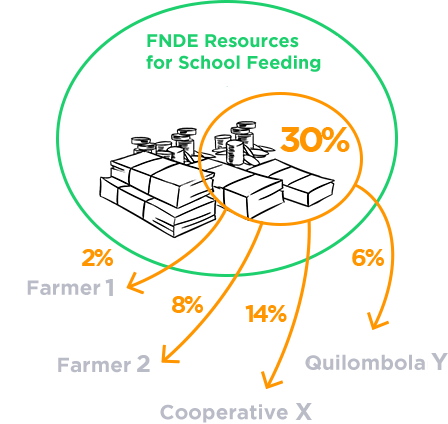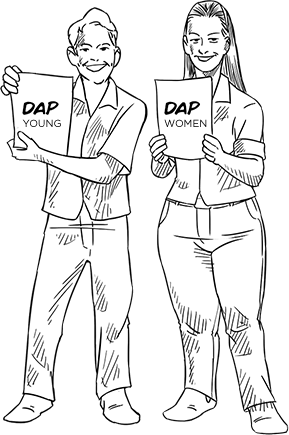On the previous module, we discussed other steps for the cycle of acquisition of smallholder farming goods for the PNAE. In this fourth and last module, we´ll talk about the final steps of the cycle: the acquisition and expenses report.
FOOD FOR THOUGHT
You must remember that we finished the previous module discussing the selection of smallholder farmers´ selling projects, but did you know there is a limit to be paid to each farmer whose project was selected? Did you know that quality control of goods to be delivered by farmers for school feeding must be carried out?

That´s right! These procedures happen, and they are necessary!
On the following steps, you will understand how the smallholder farmer, smallholder entrepreneur and associated/cooperated farmer´s individual selling limit control happens, and why it is necessary; you will also understand how the other procedures for the acquisition of goods from smallholder farming for the PNAE take place.

Selling limit control of farmers and their organizations
Upon the participation of an informal group or an individual supplier, the selling limit control of farmers is done by the EEx, who should verify, in their registrations, the limit to be paid to each farmer within their jurisdiction. That means individual contracts struck in the scope of each executive entity cannot overpass the value of R$ 20.000,00 (around USD 5200) on the Declaration of Aptitude to Pronaf (DAP) on the same year, according to Article 32 of Resolution CD/FNDE no. 26/2013.
In the case of State Secretariats for Education (SEDUCs), within the commercialization for state schools, the limit is counted for a group of schools that count as a single Executive Entity.

Attention!
Look at how the EEx must control the limit to be paid to each association/cooperative.

- For the commercialization with formal groups, the maximum amount to be hired will be the result of the number of smallholder farmers that hold a DAP Individual, bounded to DAP Legal Entity, that present the selling project, multiplied by the individual commercialization limit, following the formula below:

- The limit refers to the main DAP. Requested DAP statements present information on the main DAP number, and that is the only thing that should be considered. When there are accessory DAPs to the main DAP (DAP Young, DAP Women), only the number of the main DAP, which aggregates the values sold by accessory DAPs, will be considered.

- • The limit per farmer related to the PNAE does not consider sales to other governmental purchase programs, like the PAA. Besides, even among different modalities of the PAA, modality limits of Simultaneous Donation, PAA Milk, Institutional Purchase and Direct Purchase (or, as an alternative to this last one, Stock Formation) can be accumulated. In this way, public entities will be able to stimulate smallholder farming by means of institutional purchases from many sources, according to its demand and local reality. (Smallholder farming acquisition manual. 2nd edition. 2015).

FOOD FOR THOUGHT
Another important procedure in the acquisition of foodstuffs from smallholder farming for school feeding is quality control. What do you know about this? Do you know how this control is done, for example? Who is responsible for it?

